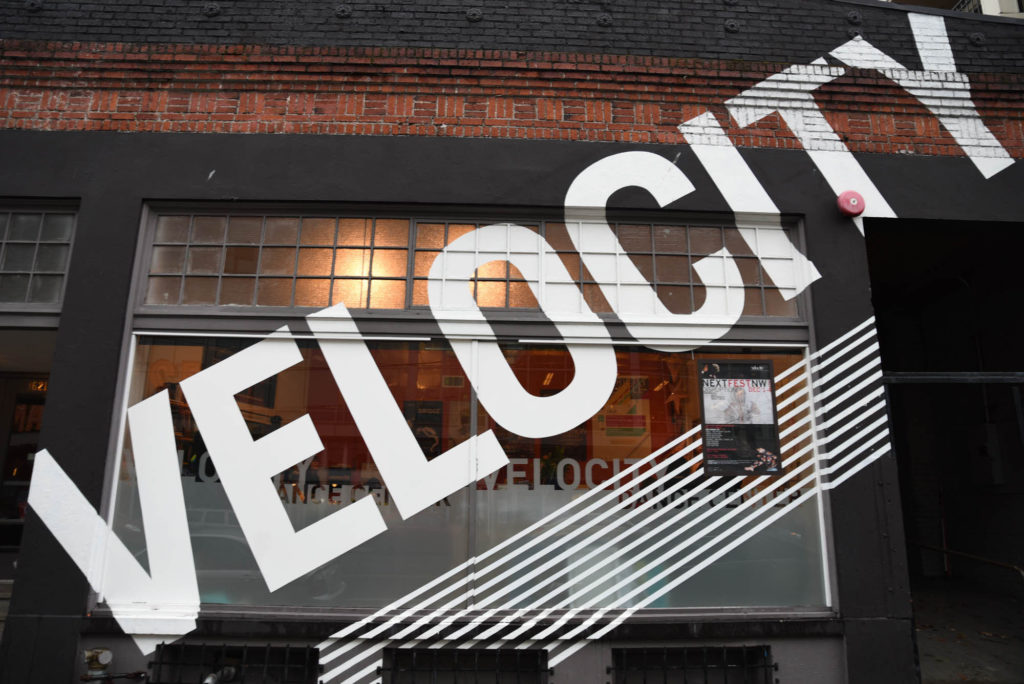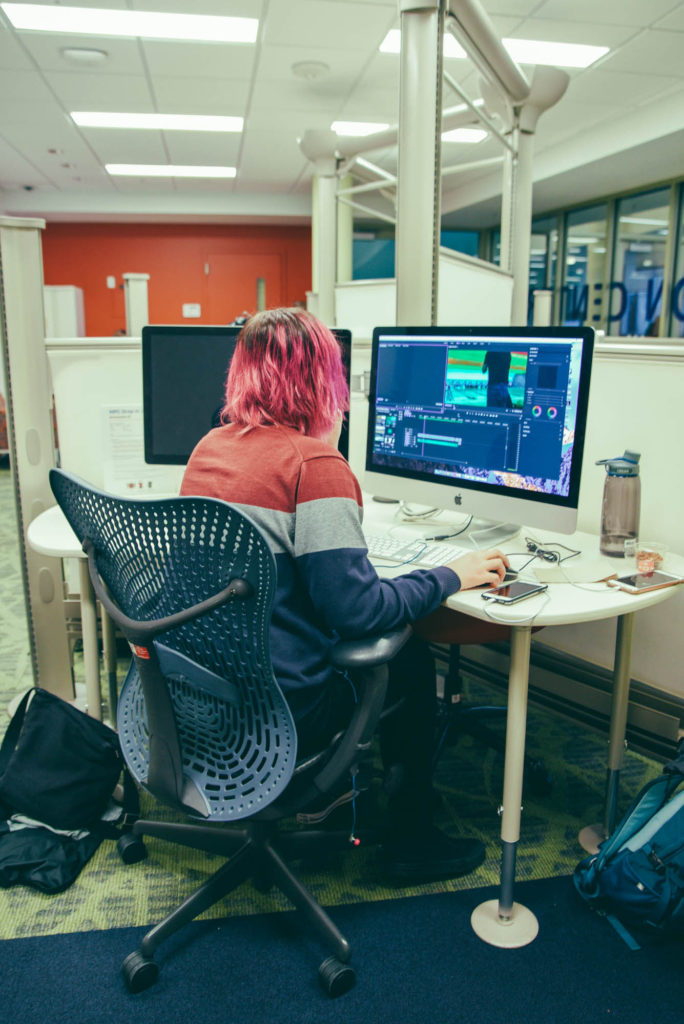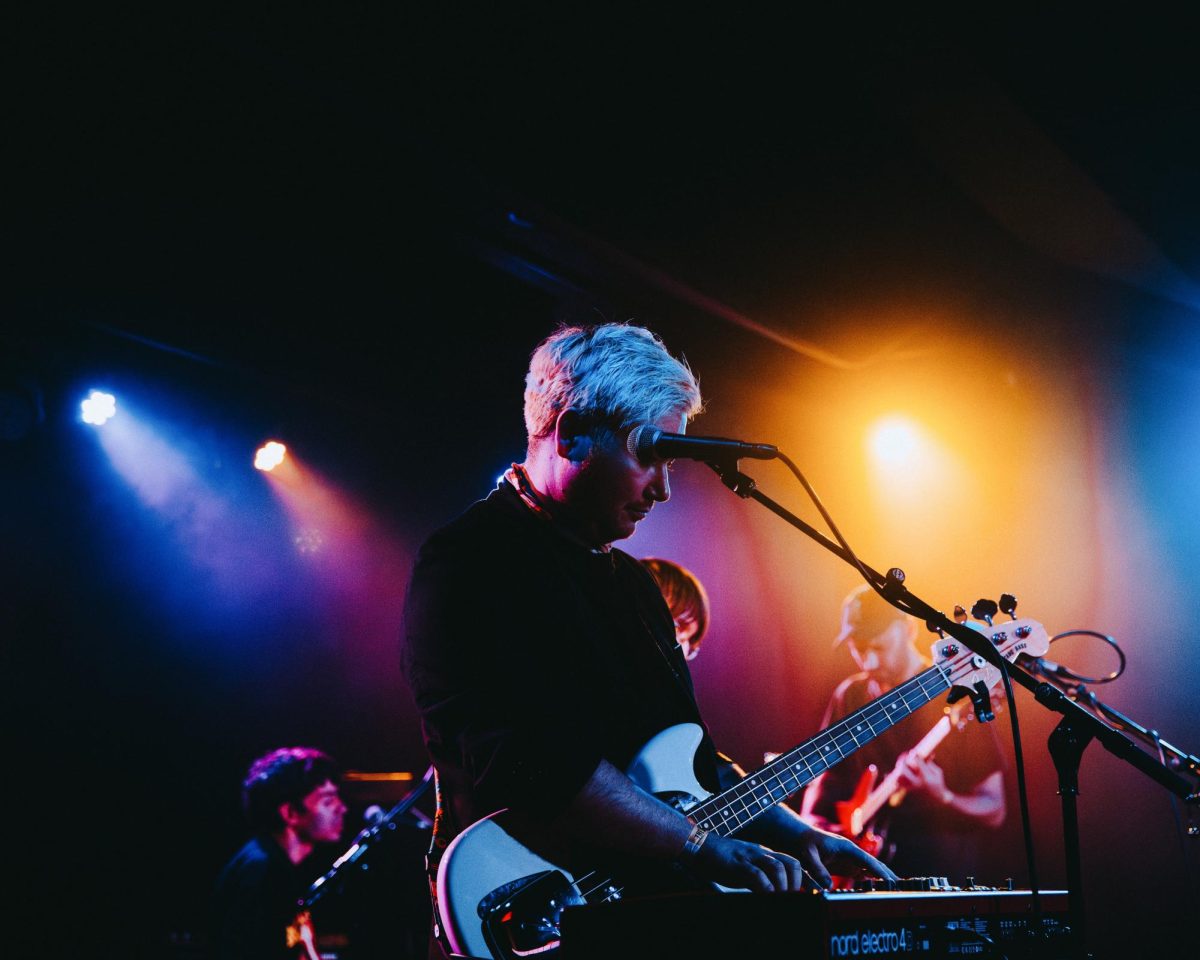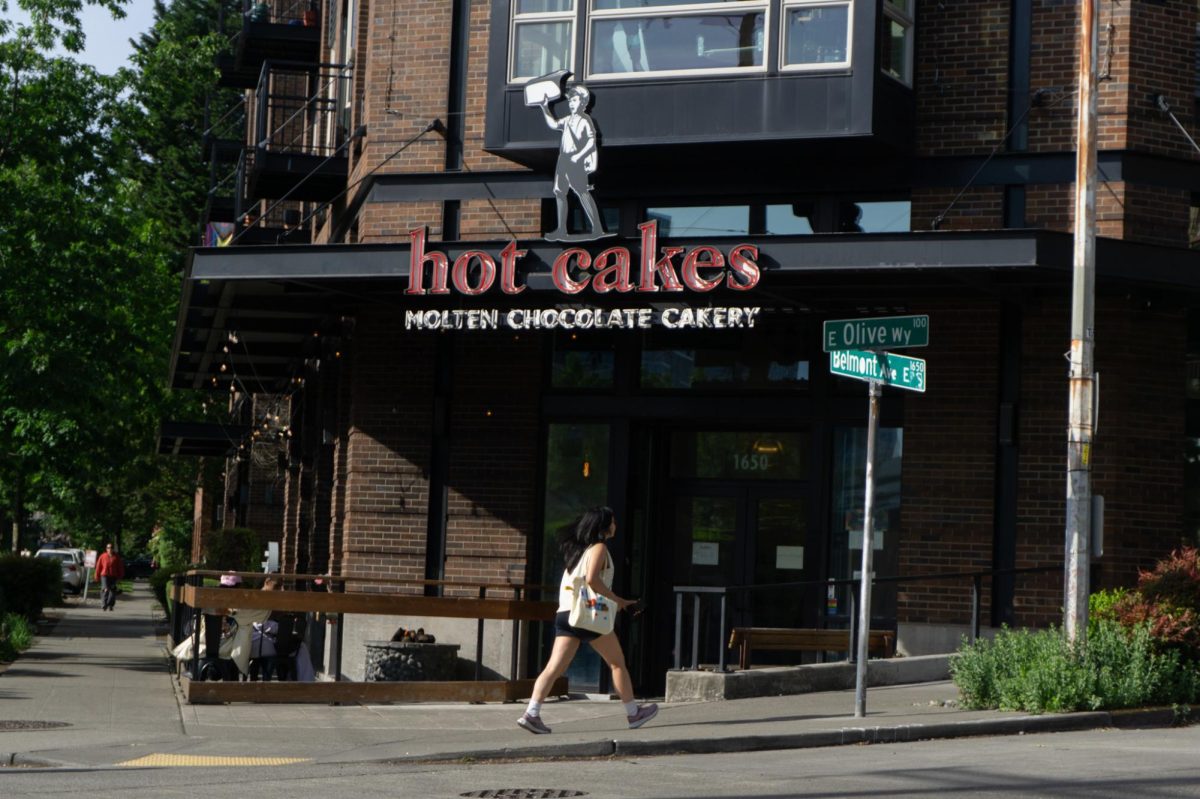Note from the Editor: This article was co-written by Frances Divinagracia and Gillian Monty, although we are currently unable to display multiple authors’ names due to technical difficulties.
Artists and creatives: are you seeking to diversify your creative expression? Are you looking collaborate with other artists and explore new mediums? Getting feedback for a variety of multimedia art projects can as simple as taking a walk around Capitol Hill.
The Hugo House: “Works in Progress”
The Hugo House is a resource for writers seeking to connect with the larger literary community, or to share and improve upon their work.
An event called “Works in Progress”, hosted by the Hugo House, takes place every first and third Monday of the month. Works in Progress provides a space for folks with varying literary experiences to share their work and all genres are welcomed and encouraged.
Poetry, nonfiction inspired pieces, fiction, prose and abstract ideas are all supposed to be met with questions, feedback and constructive dialogue.
“If you’re writing novel, if you have one half of a chapter, some sort of thought, or if you have something kind of worth sharing, you just read it, and it’s wonderful,” attendee Francesca Robello said about Works in Progress.
In addition to Works in Progress, the Hugo House offers classes and programs that incorporate a variation of writing styles and genres. The classes cater to novelists and novice writers alike, with the purpose of advancing the student’s writing skills despite their level of experience.
Ryan Owens, a desk assistant at the Hugo House, explained that there are up to 80 classes offered per quarter.
“There is a good consistent base of students who take classes. There is also a large group of people, probably 45 plus, who enjoy writing memoir,” Owens said. “I wish I had known about the Hugo House even before I went to college.”
As a part of “The Writing Life” series, the Hugo House offers a course on submission strategies. The course is designed to accelerate the completion of a literary work, offer services to find opportunities to present it, and to provide strategies for submission.
“Made at Hugo House” is another resource for budding artists. The fellowship program provides resources and space for a select few Seattleites to complete a literary project.
Owens mentioned that the Hugo House will be moving to a new location on 11th ave., which is expected to open during the summer of 2018. The space will be ADA accessible and will include a 150 seat auditorium to accommodate the large audience that Works in Progress entertains.
The new space will incorporate salon rooms. The rooms will be accessible for Hugo House students and city-dwellers alike to socialize and write. The Hugo House may be a good space for published authors and novices alike to cultivate and express ideas.
Velocity Dance Center: Sh*t Gold
The Velocity Dance Center is a social hub for creatives of any medium that offers space for experimentation and public exhibition.
Sh*t Gold, an hosted by Velocity Dance Center every first and third Monday of the month, is an open-mic event. Velocity Dance Center advertises Sh*t Gold as a space for public experimentation for artists who are unafraid to fail.
Sh*t Gold invites artists and non-artists alike to debut a task, sketch or idea. Every participant is allotted 5 minutes to present a creative expression of their choosing. Expressions may include, but is not limited to, poetry, movement, music composition and theatrical enactment. Multimedia and interactive art productions are also encouraged.
Henry Penasco, known as “H.P.”, described the typical itinerary of a Sh*t Gold event.
“The typical performance lasts for about five minutes, and then there is an option to receive feedback from the rest of the audience,” H.P said. “Members of the audience will tell you what they thought of your work. It’s supposed to be positive, in terms of constructive feedback.”
Typically, the performers arrive thirty minutes prior to sign up for the event and are randomly selected by the host. However, for this session of Sh*t Gold, H.P decided to intentionally curate the fusion of spoken word performers, dancers and musicians— which were all impromptu performers. The thoughtful organization of performances created a flow unique to the Nov. 17 session of Sh*t Gold.
H.P. mentioned that the space could be used to develop and exhibit the progression of ideas and works as well.
Emma, one of the Sh*t Gold attendees used the stage name “Am I”. She performed what H.P referred to as an “interesting character.” “Am I” had debuted and developed this character over the course of many Sh*t Gold sessions and it was encompassed through contemporary movement.
In addition to Sh*t Gold, Velocity Dance Center offers studio rentals and a creative residential program. Upon acceptance to the program, Velocity provides resources for movement-based or multimedia artists. Residents are given space grants as well as performance opportunities, exhibitions, and collaborative events to promote the creative process of selected individuals.
Battle of the Bands
Student musicians and music lovers may enjoy the annual Seattle University Battle of the Bands event.
Every year during Homecoming Week, Seattle U’s Student Events and Activities Council (SEAC) hosts the Battle of the Bands, which provides a chance for student artists, bands and musicians to showcase their original music. It is a that contributes friendly competition to “dead week”, giving students a chance to enjoy live musical performances from their peers on campus.
“This competition holds a wide variety of genres and represents a range of interests between artists,” Veronica Garcia, a second-year marketing student and this year’s Battle of the Bands Chair, said. “Some just like to perform and others really want their music to be heard by others.”
Any artist or band can enter the competition, as long as there is one Seattle U student who participates in the act. Artists are required to play their own original music. During the audition process, each artist, band or musician is given 15 minutes to play music that they feel best represents their style.
“They are evaluated based on originality, technical ability and stage presence,” says Garcia. “We want to see the passion and love the artists have for what they do.”
Previously, the winning act for Battle of the Bands won a spot to perform at Quadstock, Seattle University’s annual music festival held in the spring quarter. This year, along with the Quadstock performance, the winning act will perform at The Vera Project, an all-ages music and arts venue catered toward Seattle youth.
“I am really excited about this prize because it allows the artist to move forward in their musical journey and branch out to not only the student body of [Seattle U] but also to the community,” Garcia said. “They have the chance to share their music and start or continue to generate a name for themselves within the local music community.”
Garcia welcomes everyone to attend Battle of the Bands to support their peers showcasing their passion for their music and to help choose the winner of the competition.
“We would love to see all of our music lovers there at the event to help vote for their favorite artists of the night,” says Garcia.
The final Battle of the Bands competition will be held on Thursday, Feb. 1, 2018 in the Campion Ballroom.
Media Production Center
If you are interested in creating videos, graphic design, sound editing, or learning how to use a camera, the Media Production Center may be a suitable resource for your creative projects.
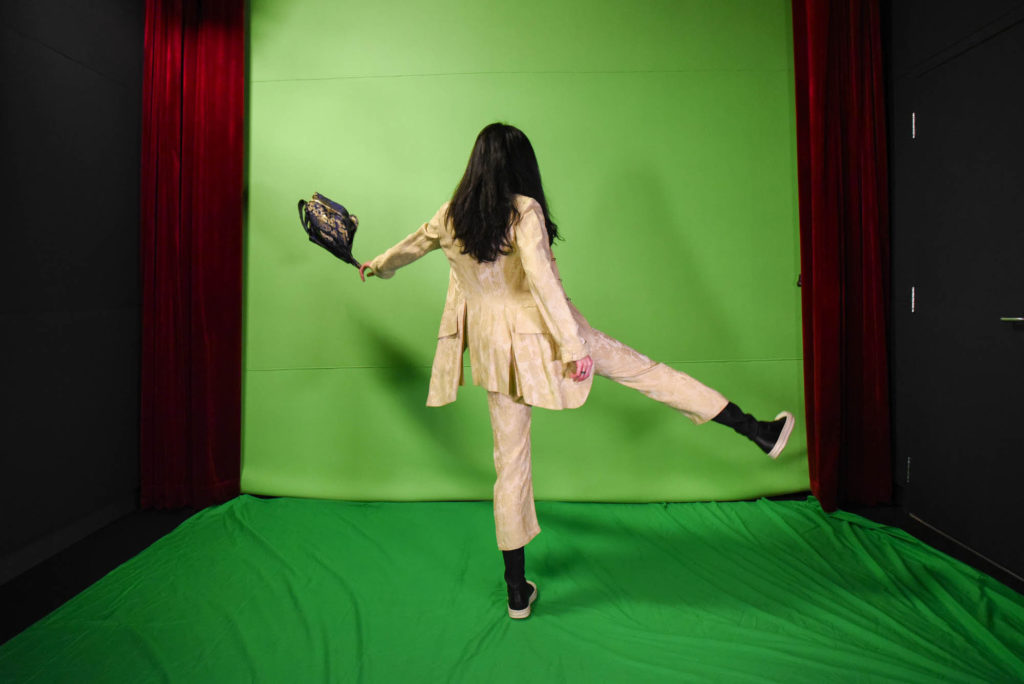
The green screen in the MPC studio, which is free for all students to use with a reservation.
The Media Production Center, commonly known to the Seattle University community as the MPC, is located on the first floor of the library and offers a wide range of services for students to work on various multimedia projects.
The center has multiple iMac computers loaded with the entire Adobe Creative Cloud software programs, such as Photoshop and Illustrator and a few soundproof rooms with recording microphones for working in groups. Students can sign up for lessons on how to use some of the equipment, such as cameras, tripods and microphones, and rent them for the day or over the weekend.
Some projects that can be seen being worked on in the MPC are students creating films, editing photos and making flyers and advertisements.
Jessica DeWitt, a third-year English and Creative Writing major, works at the Media Production Center as a media production assistant and enjoys interacting with all the students who come in to work on their projects.
“My favorite part about working in the MPC is seeing all the cool projects people have come up with,” DeWitt said.
She has even been able to use the MPC’s services for her own projects, especially when she was a club officer for the Animation Appreciation Club.
“I have used the MPC to rent equipment for video project assignments from classes, [and] to get access to Adobe editing software for work projects, personal projects and club projects,” DeWitt said.
Although the MPC can seem intimidating with its multitude of technology and software, students are encouraged to walk in and inquire about a wide range of projects.
“I wish SU community members realized that the MPC [isn’t] just for film and digital design students. It’s open to all community members,” Dewitt said. “Come and learn about what we offer if you are a little interested, because the resources here can open up a world of creativity.”
Of the many creative projects one might seek out for work or for personal enjoyment, Seattle is a well-equipped city for resources and creative community.
The editor may be reached at
arts@su-spectator.com


